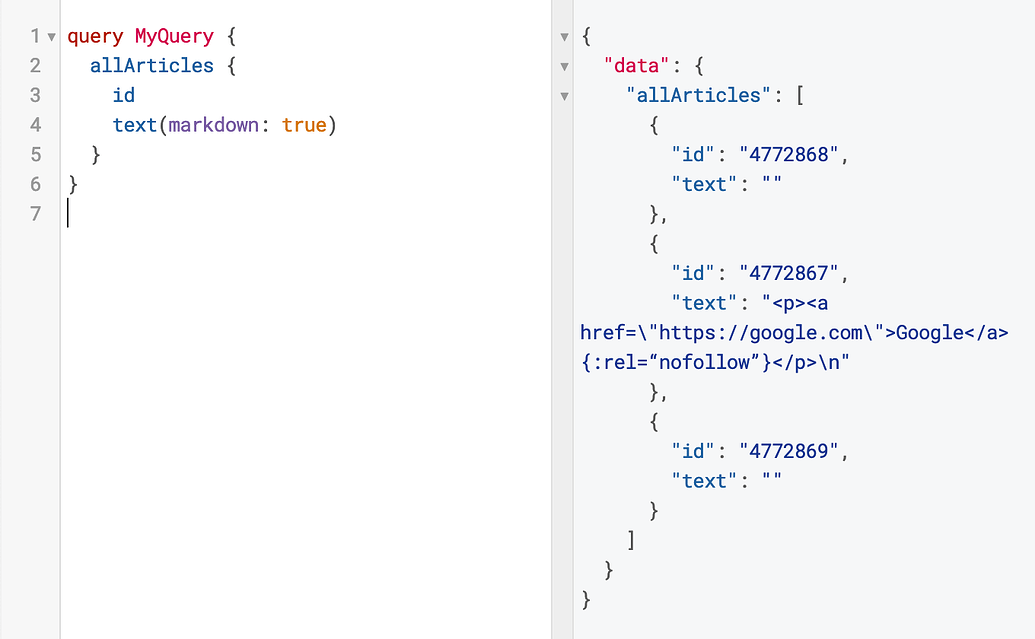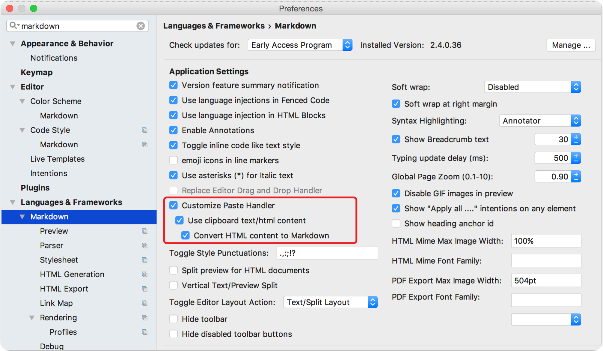
: path/or/url/to.jpg "Optional Title" Lists !(path/or/url/to.jpg "Optional Title") Reference style If the link text itself would make a good id, you can link like this, then on it’s own line anywhere else in the file:

Make a link then on it’s own line anywhere else in the file: Sometimes it looks too messy to include big long urls inline, or you want to keep all your urls together. ( "Title") (The title is optional) Reference style Perhaps you want to some link text like this: Macdown Website Just put angle brackets around an email and it becomes clickable: thing with urls: To force a line break, put two spaces and a newline (return) at the end of the line. If you already know markdown, and want to jump straight to learning about the fancier things I can do, I suggest you skip to the Markdown preference pane. The Basicsīefore I tell you about all the extra syntaxes and capabilities I have, I’ll introduce you to the basics of standard markdown. You can configure various application (that’s me!) behaviors in the General preference pane. You can customize the editor window to you liking in the Editor preferences pane: You can specify extra HTML rendering options through the Rendering preference pane. But I can do so much more! Various popular but non-standard syntaxes can be turned on/off from the Markdown preference pane. I support all the original Markdown syntaxes. I render your Markdown contents real-time into HTML, and display them in a preview panel. MacDown is created as a simple-to-use editor for Markdown documents. The original Markdown syntax specification can be found here. Markdown is a plain text formatting syntax created by John Gruber, aiming to provide a easy-to-read and feasible markup. Want to know more about it? (Answer: "Yes.Hello there! I’m MacDown, the open source Markdown editor for OS X. Looking up a topic in google and inserting the relevant link. Teach Vim about titlecase, with support for motions and text objects Arguably unecessary but provides some fenced codeblock extras.
#Macdown feature requrest free
A really nice distraction free writing plugin suggested by Thomas. Rendering > Detect Jekyll front-matter.I don’t care much about the editor, so it gets shoved right.

The changes to MacDown’s preferences I’ve found useful: So pre will now open up MacDown with the current document so I can get a good look. Hard: map pre :w:silent! !open -a MacDown % > /dev/null &:redraw! So, about getting vim to play nice with this? Not so Using OS X’s openĬommand, however, does retain your preferences. It doesn’t retain your preferences and switches to the defaults once you use it. MacDown comes with a cli command you can use to open documents from the terminal but I’ve found that Prefer is called MacDown and has plenty of good features if you ever feel like dropping into a gui
#Macdown feature requrest mac
Leverage a native mac app to get a look at what our rendered markdown files look like. From finder it seems to work justįine but that defeats the purpose of being vim-driven, right? The next best thing would be to His suggestion to try the QuickLook plugin was met with failure, as he mentioned,Īs there’s some weirdness when you try to launch from terminal. Preview Your MarkdownĪ tweet from Ches asking about previewing documents piqued my curiosity so I decided to look into itĪ little further.

Leave it to guessing? The front snippet is handy in that date for the is automatically The first two are for links and image tags, respectively. ~/.vim/snippets/markdown.snippets snippet a Remember the exact syntax for, or are slightly awkward to type.
#Macdown feature requrest code
In anyĬase, snippets are a lifesaver for the occasional piece of code or markup you can either never I use snipmate but I guess the same can be applied with something like UltiSnips? Probably. You can specify them in your vimrc to be interpreted as such. If you have many, or maybe super-specific, languages and syntaxes you commonly use in your markdown Place something like: au FileType markdown setlocal textwidth=100 Slightly more than my default 80 character width - like 100 characters. I prefer a little more space when I’m writing so I change the width before text wraps to something au BufNewFile,BufRead,BufWrite *.md syntax match Comment /\%^-\_.\-$/ The heart of which is to parse between the Helpful blog post with some details that worked for me.

It’s rather inconsequential data compared to the meat of the document, the actual content. It was looking a bit weird out of the box: Starting at the top, literally, with the front matter. While writing a post yesterday I noticed there were some gaps in my vim setup for when I’mĪuthoring a markdown file so here are a few tips for polishing up your markdown experience in vim,


 0 kommentar(er)
0 kommentar(er)
